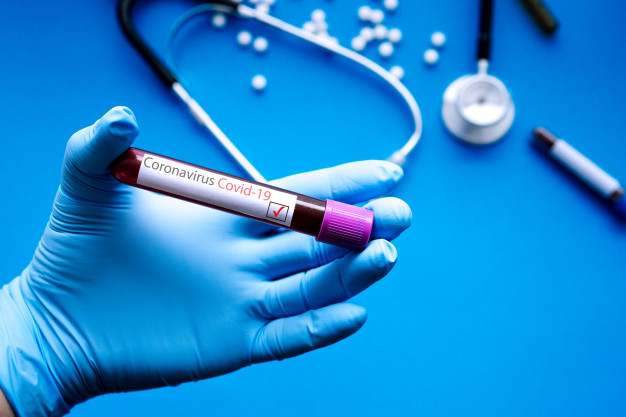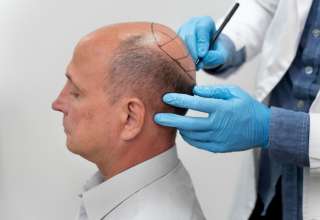Our keen devotion to progress has gifted us with convenience and ease. With constant evolution, man has not only learned to fight deadly infections but also has developed many novel ways to detect multiple pathogens and diagnose diseases. However, with the recent advancement in diagnostic technologies, microbes have also developed a lot, creating more resistance, getting more pathogenic, and evolving to the extent that makes them unrecognizable by traditional methods and latest techniques.
In the least possible time and budget, we are also covering the rare and novel species.
Here we will list the recent advancements that have brought a massive breakthrough in diagnostic testing.
Diagnostic Advancement in COVID-19 Assay:
SARS-CoV-2, a novel coronavirus, has spread a lot lately, severely afflicting global health capacities worldwide. Early diagnosis of COVID-19 has become the necessity of the time to limit its spread within the worldwide population and prevent the expected viral infectious wave in the future.
Ever since the first case reported, American and Chinese Centers for Disease Control and Prevention(CDC) have mostly used PCR for the detection of Coronavirus, which takes around about 4-8 hours to produce results.
Loop-mediated isothermal amplification (LAMP) is a new diagnostic test developed recently for SARS-CoV-2. It works by the amplification of nucleic acid that works with more sensitivity and rapid results. Moreover, it also cost-effective because it does not use any costly instrument and reagent.
This method is 100 times more efficient than the traditional polymerase chain reaction. This technique is also useful in the early detection of SARS-CoV-2 RNA in individuals, becoming the final method to eradicate the disease in a region. Recent advancement in LAMP has presented humankind with the best chance of a rapid diagnosis of COVID-19 without the requirement of highly trained professionals and sensitive instruments to analyze the results. Laboratories, like Primex Labs, are updating their methods instantly to help cure the patients and provide them first-hand knowledge on their websites.
Recent Technological Advancements in Tuberculosis Diagnostics
Tuberculosis has afflicted the man a lot for centuries, getting its position in the top 10 most common causes of deaths in the world.
Early diagnosis and treatment are indispensable for the cure and control of this highly infectious disease. The delay in diagnosis can create super complications in detection due to the risk of extensive drug resistance in bacteria Mycobacterium Tuberculosis.
While boosting MTB detection, multiple Biosensing technologies got developed which work in concord with Nanotechnology.
Several sensitive biosensors based on diverse signal transducer principles are available, which help detect MTB in the least possible time. In collaboration with diagnostic laboratories, scientists are always working to collect recent records and develop more advanced methods and tests to diagnose infections. It works best in every stage and even in very early stages when the bacteria have not grown much.
Different biomarkers make it possible to detect diverse variants, even the resistant ones!
Recent Advancement in Lung Cancer Detection:
Lung cancer is the most common cause of death among all the types of diseases in developed countries. The increased mortality is due to inadequate diagnostics in the patients during the upcoming years. More than 75 percent of patients cannot get diagnosed before stage III or IV of the disease, making further treatment using recent technologies near to impossible.
With a multistep carcinogenesis approach combined with technological advancement, we implied bronchoscopy techniques. It made possible the diagnosis of lung cancer in very early stages.
Laser-induced fluorescence endoscope (LIFE) bronchoscope improved to the extent that it can help diagnose early and pre-invasive bronchial lesions.
The use of spiral computed tomography in detecting lung cancer in high-risk individuals has made the diagnosis of peripheral tumors that could not be seen recently by conventional diagnostic technologies.
Use of Saliva for Early Diagnosis:
During the recent decade, saliva got used as the most successful diagnostic fluid. It has come forward as the most triumphant success story of the century in testing and diagnosis.
With the help of advanced technologies, saliva is used for disease diagnosis and predicts disease progression. The use of saliva promises the early detection of multiple kinds of viruses, and the concentration per ml of the organism essentially indicates the progression and stage of the disease.
Multiple testing laboratories are using saliva for early diagnosis of numerous viral and bacterial infections.
Use of Sweat for a Diagnostic Purpose:
It continuously monitors a patient’s health and disease progression in recent years. These wearable biosensors work on the principle that electrolytes’ concentration gets elevated in most of the disease conditions. However, this method has certain limitations in recent years that got solved with modern technology.
In a common man, sweat production is less than ten microliters that make a non-invasive diagnosis through perspiration near impossible. However, modern advancement in diagnostic technologies has made saliva the richest source of information and diagnosis.
For example, in cystic fibrosis, there is an elevated concentration of electrolytes in sweat. Furthermore, in patients who have diabetes, there is a significant concentration of glucose in it. These changes can instantly detect any alteration in the body and disease progression, making the sweat a remarkable bioindicator of multiple disease conditions.
Use of Smartphone for Diagnostic Purposes:
We can now use a smartphone you are roaming with all the time to diagnose various disease conditions.
This handheld technique utilizes a smartphone camera that works as a sensitive high-resolution spectrophotometer. It measures various spectrums obtained due to the insertion of a microfluidic stick that gets placed into the measurement of the light path.
A few applications of these techniques are:
1. Detection of Preterm Birth:
An analysis of fetal fibronectin proteins is an essential indicator of premature birth.
2. Detection of Phenylketonuria:
An assay of phenylalanine has become an essential indicator of the presence of phenylketonuria. The most remarkable feature of this technique is that this technique’s sensitivity is comparable to that obtained by traditional methods.
So, it is becoming the most advanced technique to implant in various point of care settings for commercial biosensing analysis as a most recent, rapid, cost-effective, and straightforward way of diagnosis.
CONCLUSION:
Health care professionals, laboratory personnel, and scientists have focused a lot on the diagnosis as it’s the preliminary step for the treatment of any disease. Their efforts have resulted in multiple novel techniques and mind-blowing technologies. Scientists are focusing on non -invasive, cost-effective, and rapid diagnostic technologies for early detection of disease and to ensure the health care facilities are in the reach of each living in the society. However, there is much more to come in the upcoming years. The news of artificial intelligence for health care and diagnostic purposes is also in the air.
Stay connected to learn much more about the recent advancements in healthcare technologies and other guidelines.











